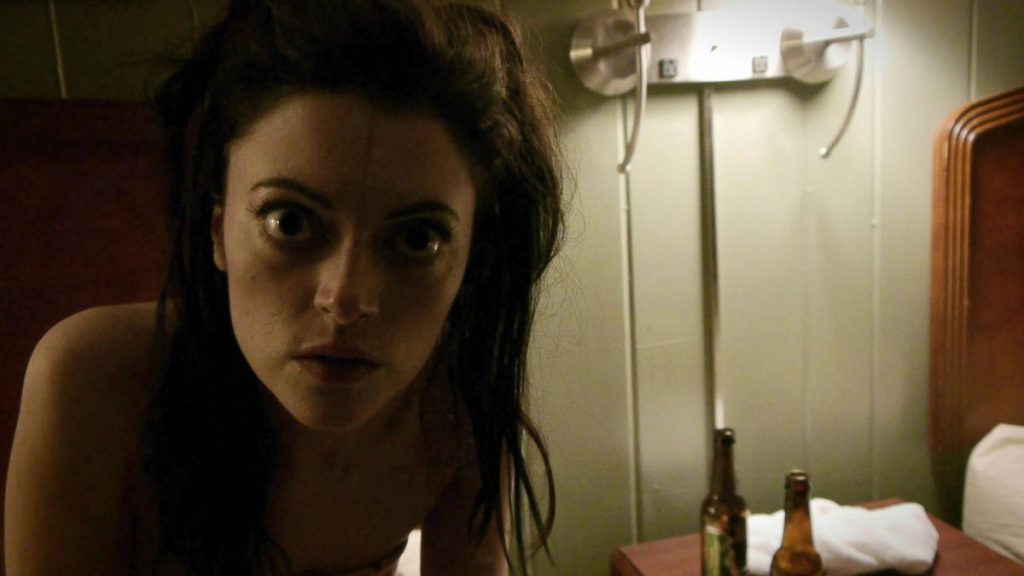Vault of Horrors and Screams, by Reed Lackey
12 Feb
The anthology format has long been a specialty not quite unique to the horror genre, but certainly utilized by it more than any other genre. What usually sets apart the best entries are a unique wraparound narrative and inventive individual sub-stories. V/H/S manages to accomplish both, although it still remains something of a mixed bag.
Conceived by Adam Wingard and Simon Barrett, V/H/S begins with a group of thieves who have been tasked with locating a rare, and for their patron – valuable, VHS tape. The group makes a living filming criminal activity in varying degrees and they see this as simply another cash opportunity. But when they arrive, they discover a dead man in a chair in front of several video monitors, surrounded by additional VHS tapes. They begin watching them, and the collection proceeds.
Presented in the still relatively new “mumblecore” style of filmmaking, characterized by improvised dialogue and naturalistic settings, and combining necessary elements of the also recent “found footage” style of storytelling, V/H/S feels like a natural culmination of recent trends in storytelling. It is, perhaps, an intentional irony then that the VHS format of movie-viewing is almost entirely obsolete. We’re watching something relatively new, presented narratively in a format that is relatively old.
As for the vignettes themselves, they benefit from many of the usual strengths (and suffer from the usual limitations) of short story-telling. Character development is extremely limited, if not absent entirely, and the scares have to come quickly if they are to emerge at all, so there is little room for mood or tone-setting. The most memorable entry is probably the first one, where frat boys try to score a one night stand and end up with a truly monstrous encounter. It was directed by David Bruckner, who effectively throws the gauntlet down for what’s to come. The third and fourth entries are largely forgettable, though they do get points for some inventive moments. However, the two most focused and effective entries are the second (directed by Ti West) and final ones (a collaboration between five directors).
West’s story deals with a young couple on a romantic getaway trip who appear to be followed by an unwelcome tagalong. It is simple, understated, and alarmingly haunting. The final sequence involves a group of guys who make their way to a Halloween party, only to discover that a legitimate ritual is occurring in the attic. Both sequences seem somehow intimate and broad, hinting at occurrences beyond the scope of their characters’ understandings while playing out in very confined spaces.
Audiences may lose their patience quickly with an unfortunate through-line of fraternity chauvinism where women are often offensively objectified (although it is interesting to note that in nearly every case, the men in the stories are the ultimate victims), but the collection holds together rather well despite a couple of weak elements. And the wraparound story has its own frights to deliver apart from the compartmentalized vignettes, and that’s part of the appeal of horror anthologies: we get five or six fright stories for the price of one. Even if some of them have questionable quality, we’re still likely to find it a bargain.




No comments yet